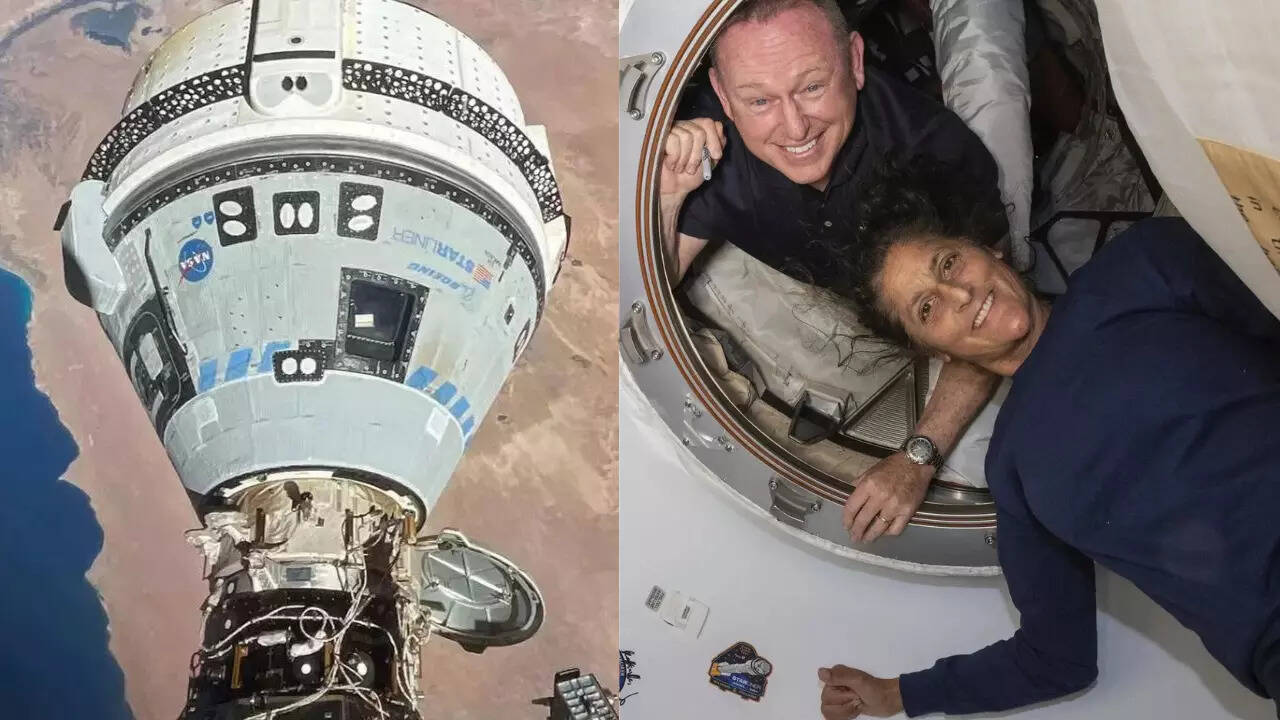
NASA's Cautious Call: Why Starliner's Astronauts Stayed in Orbit
NASA's recent decision to keep astronauts Sunita Williams and Butch Wilmore off Boeing's Starliner spacecraft upon its return has sparked considerable discussion. The mission, which concluded with Starliner's successful landing in New Mexico, revealed both triumphs and tribulations for the spacecraft and its developers.
Starliner's uncrewed landing, achieved with precision in the desert darkness of White Sands Missile Range, marked a significant moment. Yet, this achievement came against the backdrop of persistent technical challenges. Originally intended to bring NASA astronauts back from the International Space Station (ISS), the spacecraft’s journey was plagued by problems that began with its June launch. What should have been a straightforward mission extended far beyond its planned duration due to repeated thruster malfunctions and helium leaks.
The Starliner capsule, which had initially carried Williams and Wilmore to the ISS, encountered multiple issues that prompted NASA to re-evaluate its readiness for a crewed return. Despite extensive testing and Boeing's assurances of safety, NASA’s decision to use SpaceX’s Crew Dragon for the astronauts' return in 2025 was driven by a commitment to crew safety. The astronauts, therefore, had to extend their stay aboard the ISS until February 2025, an unforeseen delay that highlights the seriousness with which NASA approaches mission safety.
Also Read:- Mariners vs. Rangers: An Exciting Battle at T-Mobile Park
- Wu Jinyan and Hong Yao's Romance Blossoms into Marriage
During a recent news conference, NASA's commercial crew program manager, Steve Stich, defended the decision, expressing satisfaction with Starliner's landing but acknowledging the ongoing concerns. "I think we made the right decision not to have Butch and Suni on board," Stich said. His comments reflect the agency's deep-rooted commitment to ensuring crew safety, which guided the choice to rely on SpaceX for a safer return option.
The Starliner's mission has not been without its share of drama. After its launch in June, the spacecraft faced a series of setbacks, including thruster malfunctions and a helium leak, which led to its extended stay at the ISS. Despite Boeing’s attempts to address these issues, NASA’s decision to keep the astronauts on the space station was clear—safety could not be compromised.
This cautious approach by NASA underscores the unpredictable nature of space travel, where even the most meticulously planned missions can encounter unexpected hurdles. The Starliner’s return, though smooth, was not entirely free of problems, with NASA later revealing additional thruster malfunctions and a brief guidance system blackout during reentry.
In the broader context, Boeing’s involvement with the Starliner program has faced scrutiny. The company’s previous setbacks, including a failed test flight in 2019 and additional challenges in 2022, have placed the Starliner program under intense scrutiny. Despite these hurdles, NASA and Boeing have gained crucial insights into Starliner’s performance under extreme conditions, which will be instrumental in shaping future missions.
As Boeing's Starliner is transported back to NASA’s Kennedy Space Center for further analysis, it remains uncertain when the next crewed flight will occur. The path forward for Boeing’s manned spaceflight endeavors will be determined based on ongoing evaluations and testing. Meanwhile, Williams and Wilmore are expected to address the media from the ISS, reflecting on their extended mission and the future of space travel.
NASA's decision to keep the astronauts in space and bring Starliner back uncrewed highlights a key aspect of space exploration: the need for rigorous safety protocols. As the industry watches closely, the next steps for Boeing and its Starliner program will be crucial in shaping the future of crewed space missions.
Read More:

0 Comments